|
|
|
|
[Index]
[Back] |
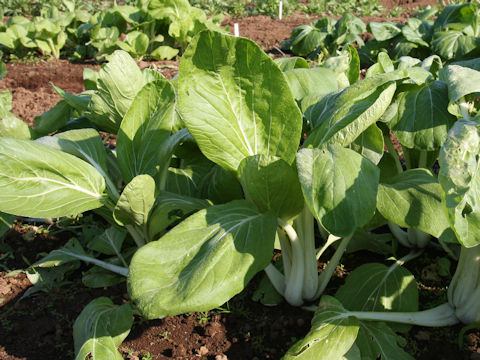 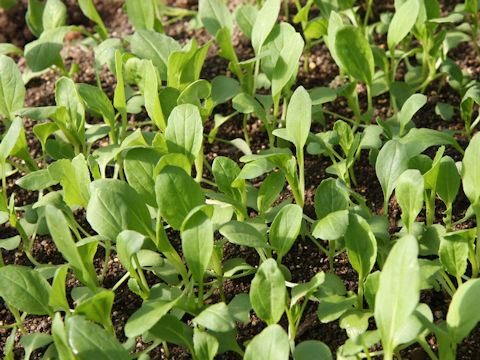 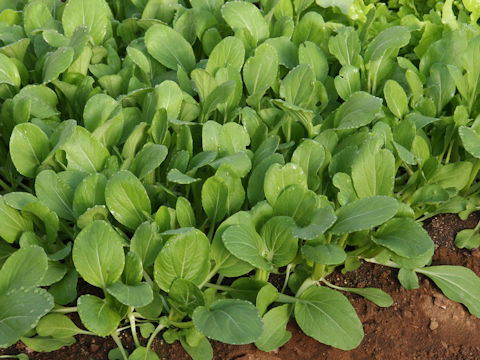 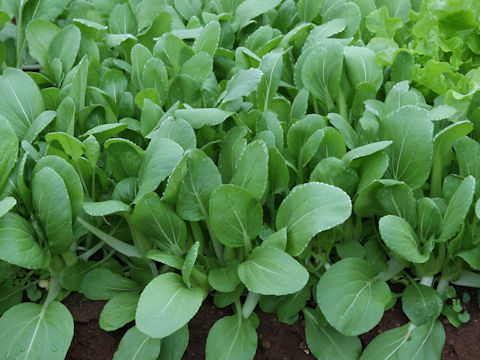 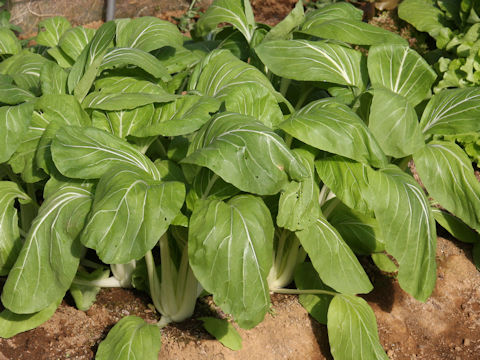 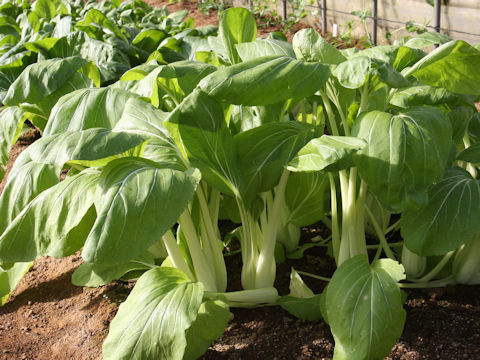 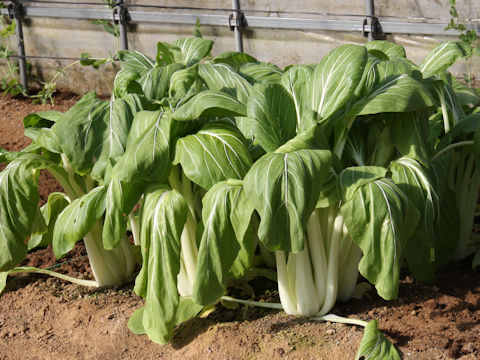 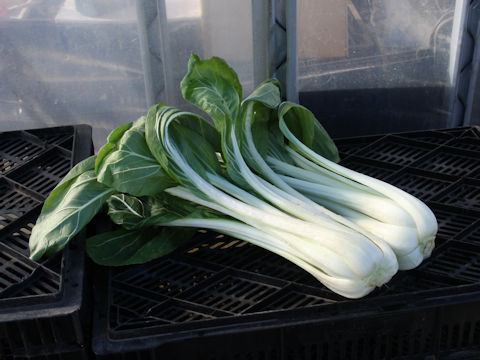 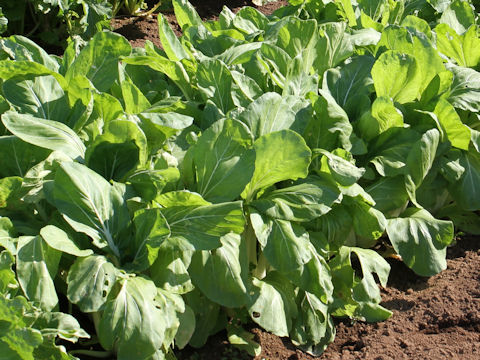 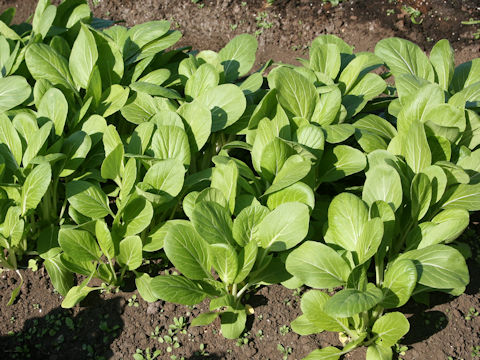 |
|
|
|
中国の華中地方、揚子江一帯で作られていたものが、わが国へは明治時代の初めに渡来し、それが土着して「雪白体菜」になったと考えられています。葉は毛がなく濃緑色で、長い葉柄は白くて直立し、高さは45センチほどになります。この葉と葉柄がおもに漬物にされ、煮食や油炒め煮にも利用されます。この姿から別名で「しゃくしな(杓子菜)」とも呼ばれます。昭和時代の初めまで、国内各地で栽培されていましたが、「結球白菜」が普及するにつれて見られなくなりました。関東地方では、柔らかい幼植物を利用する「つまみ菜」の栽培に使われています。 「たいさい」由来の地方品種としては、新潟県の「長岡菜」、山形県米沢市の「雪菜」、東北地方から新潟県で栽培されている「二貫目体菜」、北関東の「四月しろ菜」などがあります。 |
|
|
アブラナ科アブラナ属の一年草または二年草で、学名は Brassica rapa var. chinensis。英名はありません。 |
|
|
The "Tai-sai" (Brassica rapa var. chinensis) belongs to Brassiaceae (the Mustard family). It is an annual or a biennial herb that is thought that the Chinese variety, which was originally grown in the Hubei region and along the Yangtze River, was introduced to Japan at the beginning of the Meiji era (1868-1912) and became indigenous to Japan as "Seppaku tai-sai". The leaves are dark green with no hairs, and the long leaf stalks are white and upright, reaching a height of around 45 cm. The leaves and leaf stalks are mainly pickled, but they can also be boiled or stir-fried. It is also called "Shakushi-na" (ladle greens) because of its appearance. It was cultivated in various parts of the country until the beginning of the Showa period (1912-1989), but it gradually disappeared as the "Head chinese cabbage" became more widespread. In the Kanto region, it is used to cultivate "tsumani-na", which uses the tender young plants. Regional varieties derived from "Tai-sai" include "Nagaoka-na" from Niigata Prefecture, "Yuki-na" from Yonezawa City in Yamagata Prefecture, "Nikanme-tai-sai" grown in the Tohoku region and Niigata Prefecture, and "Shigatsu-shiro-na" from northern Kanto. |
|
|
[上] 千葉県香取市大角にて、2010年11月06日撮影。 [中1] 同上にて、2010年11月16日撮影。 [中2] 同上にて、2010年11月30日撮影。 [中3] 同上にて、2010年12月08日撮影。 [中4・中5] 同上にて、2010年12月25日撮影。 [中6・中7] 同上にて、2011年01月11日撮影。 [中8] 同上にて、2015年10月27日撮影。 [下] 宮城県川崎町支倉にて、2022年11月12日撮影。 |
|
|
|
Shu Suehiro |